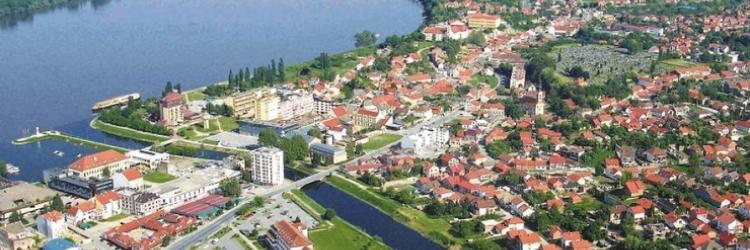Vukovar
Travel destinations , 0 Comments May 30, 2017
Vukovar is a city in eastern Croatia. Due to the fact that Vukovar has the largest river port in Croatia, located at the confluence of the Vuka River and the Danube, Vukovar has improved its economy by establishing tade with surrounding countries, which has also significantly contributed to the developing tourism. The city got its name from the river that flows through it, the Vuka River, which originates from the Slavic word 'vuk', meaning 'wolf'.
The highlight of its tourisms, while it may seem odd, are its turbulent history and the consequences left after the war and siege of 1991, which left Vukovar with destroyed economy, culture, infrastructure, civic harmony and soul. The damage caused by these events makes it hard for tourist to imagine Vukovar as it was before the war, a pretty place on the Danube, with roots stretching back to the 10th century and a series of elegant baroque mansions, bustling with art galleries and museums.
Vučedol Culture Museum: Located 4km downriver from Vukovar, this newly built museum sits on one of Europe's most significant archaeological sites and in less than a year drew 50,000 visitors. The 19 exhibit rooms on two levels give an insight into the rich, ancient Vučedol culture you've likely never heard of, referred to as the European Troy. The exhibition offer a peak at ceramics, replicas of furnaces where copper was cast, skulls and bones, earthen bowls and trays, wooden canoes and fishbone needles. Visitors can also make a detour to the Megaron. Which is a five-minute walk away from the museum – a bunker-like building with skylights that houses skeletons in a sand pit, including a grave of a deer that was used on shamanic journeys. The Megaron's rooftop attracts visitor with its view over the river and its leafy surroundings.
Castle Eltz: Closed for several years following the war, the 18th-century Eltz Palace reopened its doors after renovations in 2014. It now showcases four levels of exhibits, many with interactive multimedia features and all marked in English. Don't miss the moving 3rd-floor exhibit about the siege of Vukovar.
Ada: This sandy island on the Danube is a favorite gathering place during summer months, when both locals and tourist can be seen swimming, sunbathing, or just simply enjoying a drink in numerous cafes along the beaches. For those who like to sail, there are free boats that depart from the restaurant Vrške.
While Vukovar may not be the place of your dreams, it is worth visiting to honor the town that got back on its feet thanks to its proud citizens who didn’t let it become just another destroyed city in the wake of the war. Today, thanks to its connection with other major cities, Vukovar can be easily reached, either by bus or via river, and a lot of tourist use these ways to come here and witness the reborn city.


 RS
RS  ME
ME  HR
HR  BA
BA  RU
RU  MK
MK  AL
AL  ES
ES  DE
DE  IT
IT  CN
CN  NL
NL  SE
SE  FR
FR 




